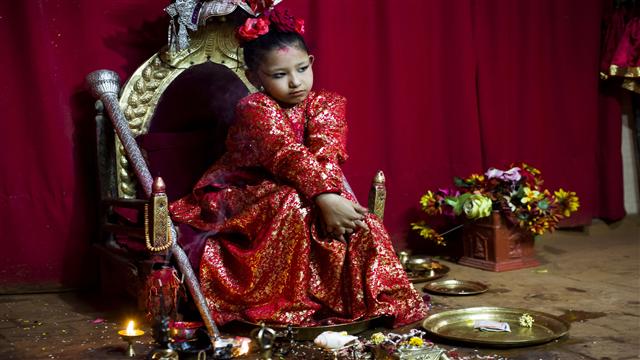“KUMARI DEVI” —— Goddess to Mortal
Certainly, the world is full of wonders: some created by nature and some created by traditions which become the basis of cultures. Under the umbrella of culture, there lie many things that make you wonder and think. The immense impact and versatility of culture can be seen in different regions of world.
The Himalayas consist of the bounteous mountain range surrounded by different regions and different communities of people. Nepal claims a big portion of the Himalayan mountains range, and the Nepalese people have a major belief in Buddha, “Founder of Buddhism.” One of the most amazing cultural aspects of the Himalayan nation is their living goddess, known as Kumari. She lives in seclusion and rarely speaks in public, bound by customs that combine elements of Hinduism and Buddhism. She is a living symbol of purity and dignity.
The Kumari tradition was started at the beginning of civilization in Himalayas. Largely unknown to the outside world, Nepal’s centuries-old institution of the child deity, the Kumari Devi, is deeply embedded in the culture of the Kathmandu Valley. Young, beautiful and decorous, even a glimpse of the Kumari is believed to bring good fortune.
The current Kumari of Kathmandu, age 9, is the best known of several girls who are worshipped in Nepal. She is revered by many, though she lives an isolated and secretive existence inside the house and is rarely seen.
The selection of the Kumari from many girls is a long process for this religious Buddhist culture. Grains are given to a group of girls under the age of five, and then the reaction to them is seen. Some girls get a fever, some get emotionally stressed, but the one who survives with tranquility is chosen to be the next goddess of Nepal. After the grain test, the girls are further narrowed down by traditional characteristics, such as thighs like a deer, a chest like a lion, and eye-lashes like cow.
Next, the girl has to survive all on her own in a dark room where there are only oil lamps that cause the room to be barely lit. Ex-Kumaris have told about the experience, saying that they had a frightening first practice, but after few days, they received the power of goddess and started felt divine calmness even at the age of 5. Hairs, nails, teeth, every small detail is noted, and then it is announced that the girl is pure, brave and has no scars on her body, so she will be the next goddess.
In her holy reign, goddess Kumari doesn’t appear in public and doesn’t speak much. She wears her ornamental heritage dresses. Benedictions are made and mercy is asked by the followers. It’s the choice of Kumari to listen to them or ignore their pledges. On holy occasions, the Kumari is taken to the parades and becomes the central point of worship among her followers.
The major drawback of being Kumari is that the girl must relinquish her position when she reaches puberty and returns to the mere mortality. It is believed that the Kumari, even after she descends from her godly position, cannot marry. Furthermore, it is alleged that if the Kumari does marry, the person will die soon after the marriage.
For some ex-Kumaris, the life of goddess is more interesting and worth living than that of an ordinary human woman, but for others, the life of a human is more fascinating than that of goddess. Although they cannot marry, former Kumaris can live wherever and however they want to.
This world is full with such beliefs, which become food for thought about these wondrous traditions. A normal, living girl moves from a mortal life to an immortal and divine one, and ends this journey, again, in mortality.

Ayesha is a foreign exchange student from Azad Kashmir, Pakistan. Ayesha was selected from over 9,000 students to be one of 100 scholarship holder sponsored...



